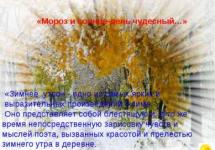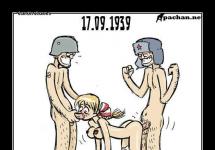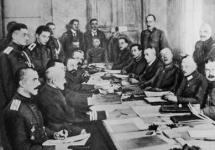The United Kingdom of Great Britain and
Northern Ireland
Four countries:
-England
-Wales
-Scotland
-Northern Ireland
Every part has own emblem, flag, capital
The capitals of countries are:
§Northern Ireland-Belfast
§
§Scotland-Edinburgh
§
§Wales-Cardiff
§
§England-London
More than 60 million Main ethnic groups – English, Scottish, Irish, Welsh and other minority groupsLanguages – main language is English, other languages are Welsh, Scottish and Irish GaelicThe largest cities are London, Bristol, Birmigham, Cantebury, Exeter, Leicester, Manchester, Leeds, Edingurg and Glasgow
reat Britain is the fourth most populous country in Europe. Those of English descent constitute about 77% of the nation"s inhabitants. The Scottish make up 8%, and there are smaller groups of Welsh (about 4.5%) and Irish (2.7%) descent. Great Britain"s population has shown increasing ethnic diversity since the 1970s, when people from the West Indies, India, Pakistan, Africa, and China began immigrating; in the early 21st cent. these groups accounted for more than 5% of the population. There is also a significant minority of Poles, who arrived after Poland joined the European Union. English is the universal language of Great Britain. In addition, about a quarter of the inhabitants of Wales speak Welsh and there are about 60,000 speakers of the Scottish form of Gaelic in Scotland.
The Church of England, also called the Anglican Church (see England, Church of), is the officially established church in England (it was disestablished in Wales in 1914); the monarch is its supreme governor. The Presbyterian Church of Scotland is legally established in Scotland. There is complete religious freedom throughout Great Britain. By far the greatest number of Britons (some 27 million) are Anglicans, followed by Roman Catholics and other Christians. There are smaller minorities of Muslims, Hindus, Sikhs, Jews, and Buddhists.
About 25% of Britain"s land is arable, and almost half is suitable for meadows and pastures. Its agriculture is highly mechanized and extremely productive; about 2% of the labor force produces 60% percent of the country"s food needs. Barley, wheat, rapeseed, potatoes, sugar beets, fruits, and vegetables are the main crops. The widespread dairy industry produces milk, eggs, and cheese. Beef cattle and large numbers of sheep, as well as poultry and pigs, are raised throughout much of the country. There is also a sizable fishing industry, with cod, haddock, mackerel, whiting, trout, salmon, and shellfish making up the bulk of the catch.
Great Britain is one of the world"s leading industrialized nations. It has achieved this position despite the lack of most raw materials needed for industry. It must also import 40% of its food suplies. Thus, its prosperity has been dependent upon the export of manufactured goods in exchange for raw materials and foodstuffs. Within the manufacturing sector, the largest industries include machine tools; electric power, automation, and railroad equipment; ships; aircraft; motor vehicles and parts; electronic and communications equipment; metals; chemicals; coal; petroleum; paper and printing; food processing; textiles; and clothing.
During the 1970s and 80s, nearly 3.5 million manufacturing jobs were lost, but in the 1990s over 3.5 million jobs were created in service-related industries. By the early 21st cent., banking, insurance, business services, and other service industries accounted for almost three fourths of the gross domestic product and employed 80% of the workforce. This trend was also reflected in a shift in Great Britain"s economic base, which has benefited the southeast, southwest, and Midlands regions of the country, while the north of England and Northern Ireland have been hard hit by the changing economy.
The main industrial and commercial areas are the great conurbations, where about one third of the country"s population lives. The administrative and financial center and most important port is Greater London, which also has various manufacturing industries. London is Europe"s foremost financial city. Metal goods, vehicles, aircraft, synthetic fibers, and electronic equipment are made in the West Midlands conurbation, which with the addition of
The United Kingdom of Great Britain and Northern Ireland is situated on the British Isles. The British Isles consist of two large islands, Great Britain and Ireland, and about five thousand small islands. Area- 244,000 square kilometers. The United Kingdom is made up of four countries: England, Wales, Scotland and Northern Ireland. Their capitals are London, Cardiff, Edinburgh and Belfast respectively. The capital of the UK is London.
The British Isles are separated from the continent by the North Sea and the English Channel. The western coast of Great Britain is washed by the Atlantic Ocean and the Irish Sea. There are a lot of rivers in Great Britain The Severn is the longest river; the Thames is the deepest and the most important one.

The UK is one of the world"s smaller countries. Its population is over 58 million. About 80% of the population live in cities.


In practice, the Queen reigns, but does not rule. The country is ruled by the elected government with the Prime Minister at the head. The British Parliament consists of two chambers: the House of Lords and the House of Commons. Buckingham Palace is the London home of the Queen. When the flag is flying on the top she is at home. Reign-царствовать Elected-избранный Chamber-палата

THE FLAG OF THE UNITED KINGDOM IS KNOWN AS THE UNION JACK. IT IS MADE UP OF THREE CROSSES: THE CROSS OF ST. GEORGE (THE PATRON SAINT OF ENGLAND), THE CROSS OF ST. ANDREW (THE PATRON SAINT OF SCOTLAND) AND THE CROSS OF ST. PATRICK (THE PATRON SAINT OF IRELAND). THE PATRON SAINT-покровитель


England"s terrain mostly comprises low hills and plains. There are uplands in the north (the mountainous Lake District, Pennines, and Yorkshire Dales) and in the south west (Dartmoor and the Cotswolds). England"s population is about 51 million, around 84% of the population of the United Kingdom, the South East and conurbations in the Midlands, the North West, the North East and Yorkshire, which each developed as major industrial regions during the 19th century. Terrain- местность Compris-состоит Plain-равнина Upland-нагорье


Across the road from Westminster Abbey is Westminster Palace, or the Houses of Parliament, the seat of the British Parliament. The Clock Tower of the Houses of Parliament is famous for its big hour bell, known as "Big Ben". Seat-резиденция


Trafalgar Square At its centre is Nelson"s Column, which is guarded by four lion statues at its base.

LONDON BUSES IS THE SUBSIDIARY OF TRANSPORT FOR LONDON (TFL) THAT MANAGES BUS SERVICES WITHIN GREATER LONDON, UK. BUSES ARE REQUIRED TO CARRY SIMILAR RED COLOUR SCHEMES AND CONFORM TO THE SAME FARE SCHEME. SUBSIDIARY-предприятие MANAGE-управлять REQUIRED TO CARRY-необходимые для выполнения CONFORM-соответствовать



Occupying the northern third of the island of Great Britain, Scotland shares a border with England to the south and is bounded by the North Sea to the east, the Atlantic Ocean to the north and west, and the North Channel and Irish Sea to the southwest. Scotland includes over 790 islands including the Northern Isles and the Hebrides. Occupying-занимая shares a border- граничит


Edinburgh, the country"s capital and the second largest city, is one of Europe"s largest financial centres.


Haggis- a food made from the organs of sheep and oatmeal. Kilts - traditional Scottish woolen cloth costume with a tartan or plaid pattern. This is a skirt that men wear. Bagpipers - people who play the bagpipes, a traditional Scottish instrument Oatmeal- овсянка Woolen- шерстяной Skirt- юбка Bagpiper- волынщик


The Red Dragon of Wales was introduced to Britain by the Romans some eighteen hundred years ago. On March 1 is St. David"s Day the Welsh national holiday. The daffodil is a Welsh national emblem. St. David is the patron saint of Wales. The leek is the emblem of Wales since the 16th century. Daffodil –желтый нарцисс; Patron – покровитель, заступник; Leek – лук-порей.
 25
The National Museum Wales was founded by royal charter in 1907 and is now an Assembly sponsored public body. The National Museum is made up of seven sites across the country. Aberystwyth is home to the National Library of Wales. Found – закладывать, начинать строительство; public body – государственный орган; site – место; Museums, libraries
25
The National Museum Wales was founded by royal charter in 1907 and is now an Assembly sponsored public body. The National Museum is made up of seven sites across the country. Aberystwyth is home to the National Library of Wales. Found – закладывать, начинать строительство; public body – государственный орган; site – место; Museums, libraries

About 78% of the land surface of Wales is given over to agricultural use. However, very little of this is arable land; the vast majority consists of permanent grass pasture or rough grazing for herd animals such as sheep and cows. Surface – поверхность; Arable – пахотный; vast – обширный; Pasture, grazing – пастбище; rough - дикий; herd - стадо.

Content. Symbols. The head of state.
The Map of Great Britain. Of the four parts which make up Great Britain England is the largest,the industrial and most densely populated part of the United Kingdom

The Coat of Arm
The rose was adopted as England"s emblem around the time of the War of the roses - civil wars () between the royal house of Lancaster (whose emblem was a red rose) King Richard II and the Yorkists

The F lag
The cross of St. George, the Patron Saint of England, is the national English flag.
The flag of the UK is officially called the Union flag, because it embodies the emblems of three countries united under one monarch.
The Union Flag is commonly known as the Union Jack, although the exact origin of the name is unclear.

Born April 21, 1926, London. Elizabeth Alexandra Mary Windsor (British).
Elizabeth became Queen of England on June 2, 1953 after being crowned at Westminster Abbey in London. She has three sons, Prince Charles, Prince Andrew and Price Edward and one daughter, Princess Anne.



It is popularly known as Big Ben, but this name is actually a nickname for the clock"s main bell. The tower was actually built in the 12th century when king Нenry the eight ordered his servants to, because he didnt have a watch.

Buckingham Palace.
It is the residence of the Queen

Hyde Park
Hyde Park is one of the largest parks in central London and one of the Royal Parks of London, famous for its Speakers" Corner.

St.James"s Park
St James"s Park is bounded by The Mall to the north, Horse Guards to the east, and Birdcage Walk to the south. The park has a small lake, St James"s Park Lake, with two islands, Duck Island (named for the lake"s collection of waterfowl), and West Island

Trafalgar Square is a square in London, that commemorates the Battle of Trafalgar (1805), a British naval victory of the Napoleonic Wars. The original name was to have been "King William the Fourth"s Square", but George Ledwell Taylor suggested the name "Trafalgar Square".

Westminster Abbey is one of the most famous, historic and widely visited churches not only in Britain but in the whole Christian world
Westminster Abbey has had bells since 1220 and bells in use today include one 13th century and two 16th century bells. The Westminster Abbey Company of Ringers provides ringing at the Abbey for major church festivals, Royal and civic events.

Brighton.
Brighton is one of the most popular seaside resorts in Britain. It is called “London-by-the sea”

The Thames is a river in southern England. It rises in Gloucestershire and flows through Oxfordshire, Berkshire, Buckinghamshire, Surrey, London, Essex, and Kent.
The Thames


St.Paul"s Cathedral
St Paul"s Cathedral is an Anglican cathedral on Ludgate Hill, in the City of London. The cathedral is one of London"s most visited sites.

The Tower"s primary function was a fortress, a royal palace, and a prison (particularly for high status and royal prisoners, such as the Princes in the Tower and the future Queen Elizabeth I)





